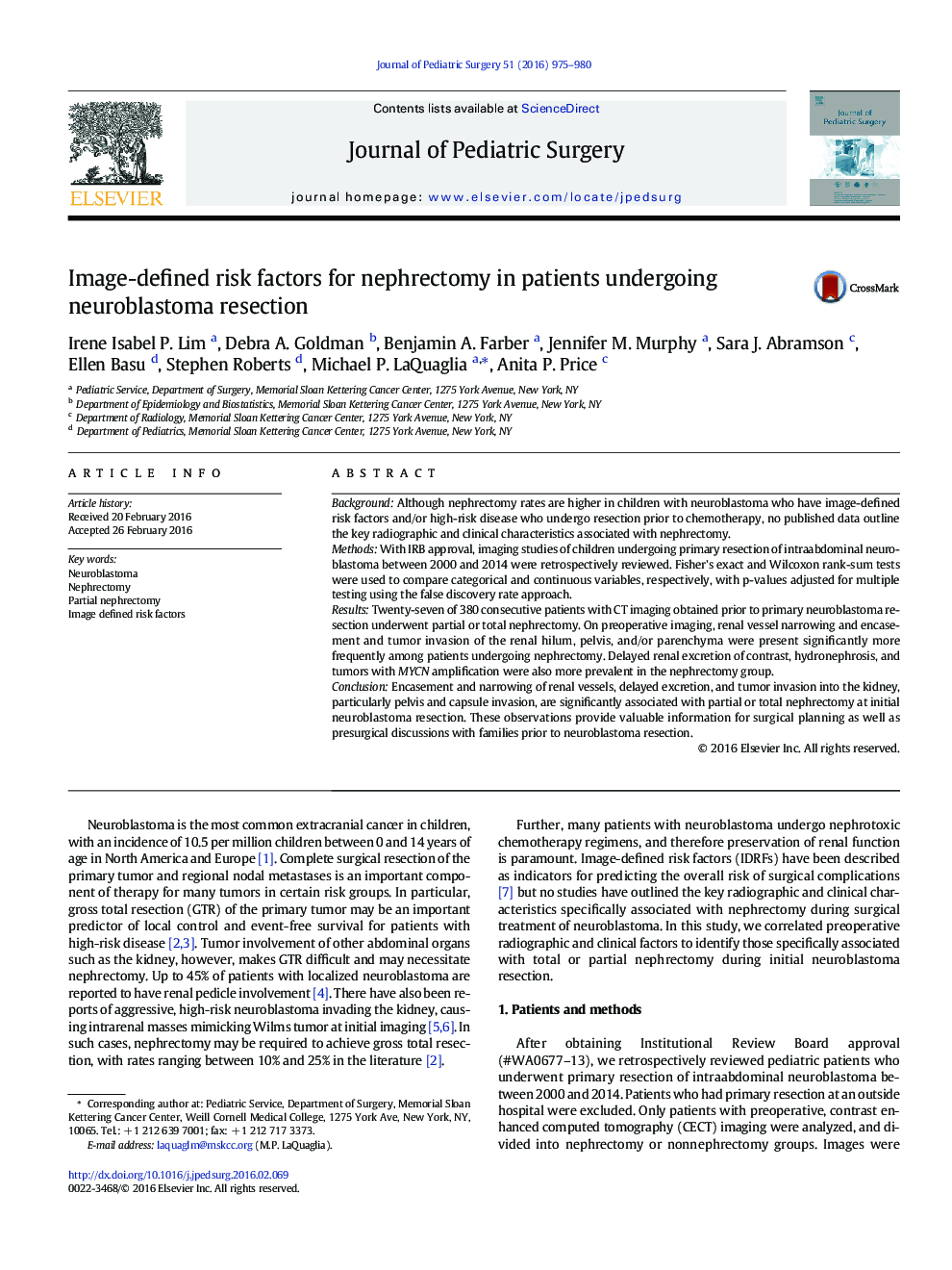| Article ID | Journal | Published Year | Pages | File Type |
|---|---|---|---|---|
| 4154918 | Journal of Pediatric Surgery | 2016 | 6 Pages |
BackgroundAlthough nephrectomy rates are higher in children with neuroblastoma who have image-defined risk factors and/or high-risk disease who undergo resection prior to chemotherapy, no published data outline the key radiographic and clinical characteristics associated with nephrectomy.MethodsWith IRB approval, imaging studies of children undergoing primary resection of intraabdominal neuroblastoma between 2000 and 2014 were retrospectively reviewed. Fisher's exact and Wilcoxon rank-sum tests were used to compare categorical and continuous variables, respectively, with p-values adjusted for multiple testing using the false discovery rate approach.ResultsTwenty-seven of 380 consecutive patients with CT imaging obtained prior to primary neuroblastoma resection underwent partial or total nephrectomy. On preoperative imaging, renal vessel narrowing and encasement and tumor invasion of the renal hilum, pelvis, and/or parenchyma were present significantly more frequently among patients undergoing nephrectomy. Delayed renal excretion of contrast, hydronephrosis, and tumors with MYCN amplification were also more prevalent in the nephrectomy group.ConclusionEncasement and narrowing of renal vessels, delayed excretion, and tumor invasion into the kidney, particularly pelvis and capsule invasion, are significantly associated with partial or total nephrectomy at initial neuroblastoma resection. These observations provide valuable information for surgical planning as well as presurgical discussions with families prior to neuroblastoma resection.
